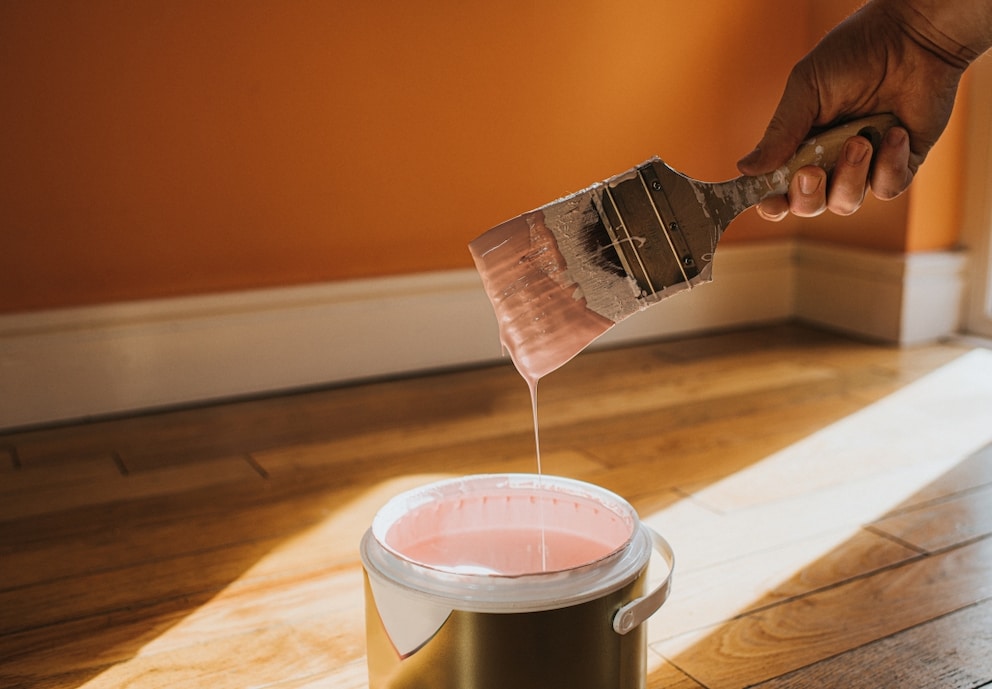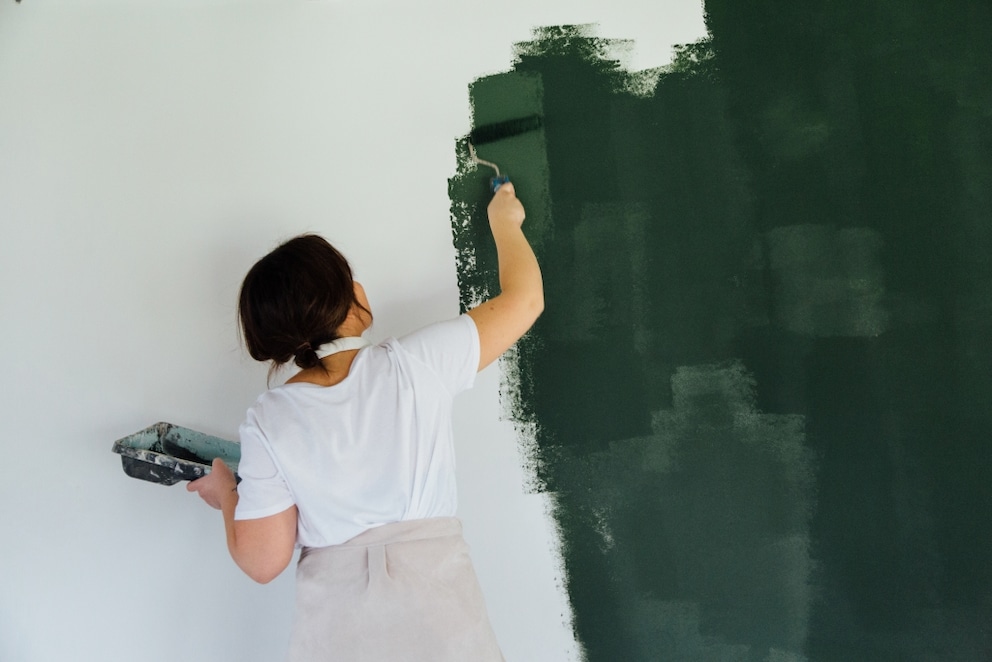August 4, 2024, 5:43 am | Read time: 5 minutes
When it comes to giving interior walls a fresh coat of paint, dispersion paint is often the go-to choice at the hardware store. It’s been a bestseller for many years—and for good reason. Its many positive attributes speak for themselves and are a decisive selling point for many customers compared to other wall paints. However, dispersion paint also has several drawbacks.
What Is Dispersion Paint?

Whether in private or professional settings, dispersion paint is a popular choice for painting interior walls. It’s no surprise, given its availability in numerous shades, ease of application, and fair price. It’s ideal for non-mineral surfaces, while mineral surfaces require a primer coat first.
A true classic is the white wall paint for interiors, often applied to textured wallpaper. Tinting colors can be used to achieve a personalized wall finish. Many hardware stores also offer custom mixing of favorite shades.
What Is Dispersion Paint Made Of?
The popular interior wall paint is based on a mixture of two substances, known in chemistry as dispersion. In most cases, it’s an emulsion—a blend of different liquids that typically wouldn’t mix. Yet, in the case of dispersion paint, it results in a homogeneous mass.
Essentially, it’s a water-based paint type with a binder—a synthetic resin dispersion according to DIN 55 94. Additionally, dispersion paint consists of color pigments, solvents, fillers, and additives (stabilizers, thickeners, plasticizers) that can enhance coverage. Titanium dioxide is used as a pigment in white paint.
Some hardware stores also offer dispersion paint as natural resin paint, based on linseed and castor oil. Both types may contain preservatives and sometimes biocides to increase durability and mold resistance.
Synthetic resin dispersion also contains solvents. However, not all preservatives are always listed in the product declaration; the binder may already contain preservatives. Nowadays, there are dispersion paints, whether natural or synthetic, entirely free of preservatives and solvents.

Advantages of Dispersion Paint
Dispersion paints are popular for a reason—they offer many advantages. Compared to other coatings, this paint is available in countless shades. Tinting colors allow for mixing the exact shade needed—in both glossy and matte finishes. However, the more intense the color, the higher the cost of the paint.
Generally, dispersion paint is significantly cheaper than natural or mineral paints due to high demand and mass production. This greatly increases the purchase incentive for customers. Nonetheless, it’s advisable to look for high coverage and wet abrasion class when buying.
Dispersion paints come in different wet abrasion classes. These are indicated on the paint bucket and reveal how scrub-resistant the coating is. Some paints can be cleaned with water and a brush (Class 1), while others are more sensitive when trying to wipe away stains (Class 5).
Glossy dispersion paints often prove more resistant to moisture. Thanks to their high coverage and stain resistance, dispersion paint usually delivers a highly satisfactory result after the first coat. Additionally, this type of paint dries quickly, within three to four hours, making it popular for renovations (such as rental apartments) and especially for ceiling painting.
In terms of application, dispersion paints are also a suitable choice. The paint can be easily applied with a brush, roller, or spray. With some know-how and the right painting equipment, the paint can also be sprayed onto the wall. If needed, the synthetic resin-bound paint can be diluted with water. Moreover, newer products tend to develop little to no odor during drying.
Also interesting: 5 Eco-Friendly Wall Paints as a Healthy Alternative to Conventional Coatings
Another aspect in favor of dispersion paint: Due to additives, the coating has a long shelf life. Airtight in the bucket, the paint can be used months later to cover small blemishes or stains. Only when the mass clumps, smells unpleasant, or even molds, should it be disposed of immediately.

The Pros and Cons of Clay Paint

Chalk paint is particularly well-suited for this purpose.

5 Tips for a Sustainably Designed Bedroom
Disadvantages of Dispersion Paint
Of course, there are some drawbacks to dispersion paint. Those who save money by choosing inferior products risk having to paint multiple times for acceptable coverage. This effort not only takes more time but ultimately costs more paint, proving to be the more expensive route. Additionally, cheap products with wet abrasion class 5 may cause the paint to dissolve.

Additionally, the wall paint is not diffusion-open like clay or silicate paint and therefore cannot regulate moisture and indoor climate. In the worst case, such a coating can lead to mold.
In times of increased environmental protection and the rise of more ecological products, many people are displeased that dispersion paints often contain solvents and preservatives. As a result, the paint may contain several concerning ingredients. Cheap products, in particular, can sometimes trigger allergies.

